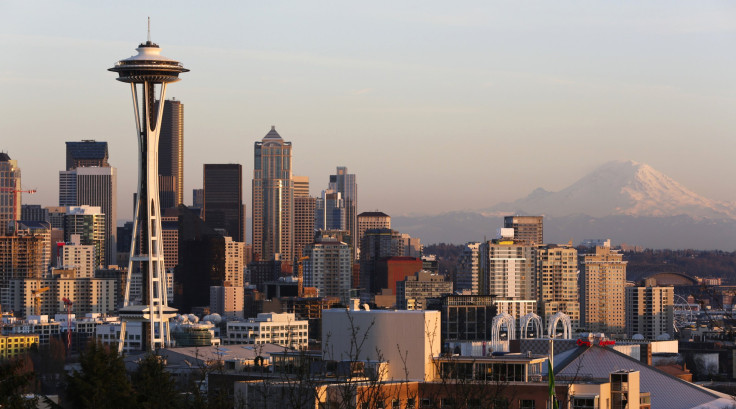US And Climate Change: Here Are The Top 10 Greenest Cities In America

Cities across the U.S. have taken great strides toward green and sustainable living, outpacing the federal government’s sluggish response to climate change. City lawmakers have increasingly adopted measures to cut their cities’ carbon emissions, recycle waste and fast-track legislation to protect the environment.
There is no official government ranking for the greenest U.S. cities, and there are several factors to consider. The size of a city’s “carbon footprint” (i.e., the amount of greenhouse gases it emits) is one indication of a city’s environmental friendliness. The number of so-called LEED-certified buildings (i.e., structures designed with minimal nonrenewable energy use and reduced water consumption) is also a good gauge of a city’s ecological consciousness. Cities with high proportions of green space also get two (green) thumbs up.
Based on these and other criteria, below are the 10 greenest cities in the U.S., in no particular order:
1. San Francisco. The city’s curbside compost pickup program is just one of its many eco-friendly features. It was also the first U.S. city to ban plastic grocery bags.
2. Chicago. Chicago has more green roofs (i.e., roofs partially or completely covered in vegetation) than does any other city in the U.S. Green roofs help cut the amount of energy it takes to heat and cool a building, while also improving air quality.
3. Austin, Texas. The city has pledged to go carbon-neutral by 2020 and is the country’s top seller of renewable energy. Its 50 miles of trails and luscious greenbelts also don’t hurt.
4. Seattle. With seven parks per 10,000 residents, Seattle has more green space than do most other major U.S. urban centers. The city’s residents are also among the most sustainability-savvy around. More than 20 public buildings in Seattle are LEED-certified or being constructed for LEED certification. (LEED is the acronym for “Leadership in Energy and Environmental Design.”)
5. Long Beach, Calif. It is among the most walkable cities in the U.S. and has an aggressive solar-energy program. In addition to Long Beach’s many solar-power sources, including trash cans, parking lots and dog parks, the city plans to harvest 10 megawatts of solar power by 2020, as noted by USA Today.
6. Portland, Ore. The heart of bicycling culture, Portland has an admirable mass-transit system, plenty of green space and a robust recycling program. It is also in the lowest 20 percent of U.S. cities for total carbon emissions per capita, according to the Brookings Institution in Washington. (The Brookings Institution describes itself as a think tank promoting the economic and social opportunity, security and welfare of all Americans: It is funded by individuals, corporations and foundations, as well as U.S. and foreign government agencies.)
7. Fresno, Calif. This city in central California has one of the highest rates of recycling in the country. An impressive 73 percent of Fresno’s trash is diverted from landfills versus 30-50 percent in most cities.
8. Burlington, Vt. This city of just 42,000 people recently transitioned to 100 percent renewable energy. Vermont’s largest city gets one-third of its power from hydroelectric dams, one-third from wind energy and one-third from biomass renewal.
9. Oakland, Calif. Oakland boasts the country’s cleanest tap water as well as an extensive hydrogen-powered public-transit system. The city gets 17 percent of its energy from renewable sources.
10. Cambridge, Mass. In 2002, city officials pushed ahead with a comprehensive sustainability plan that included a citywide compost collection project. Most of Cambridge’s vehicles are fueled by low-emission B20 biodiesel or electricity, the Mother Nature Network reported.
© Copyright IBTimes 2025. All rights reserved.




















